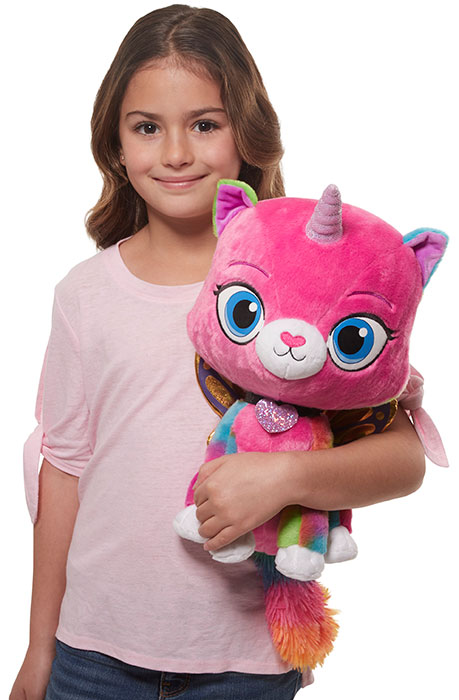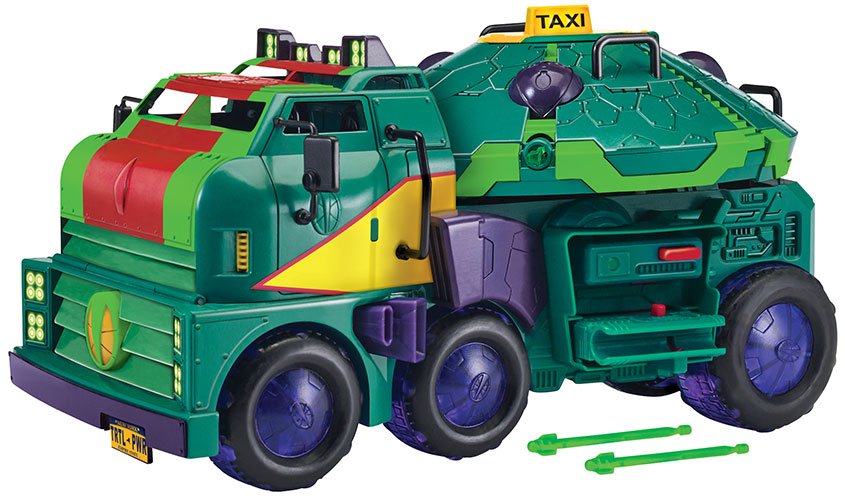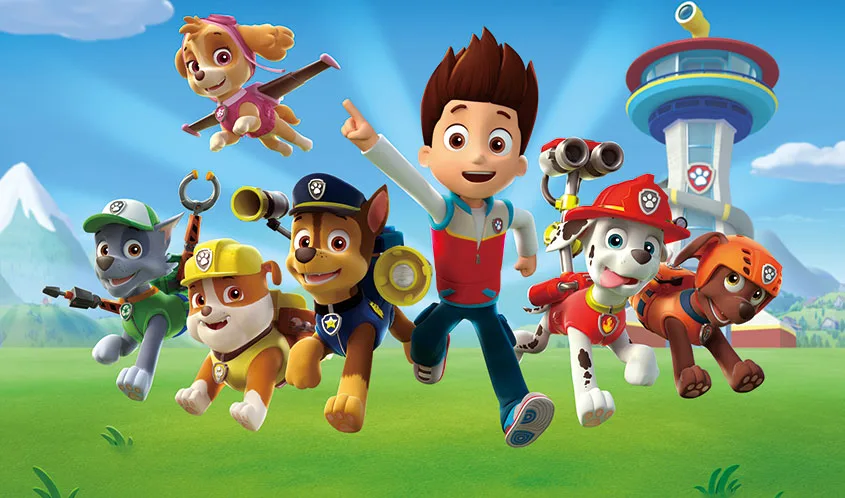Your kids are watching Paw Patrol, and the episode features an awesome fire truck. Fast forward to the next week: You’re walking through Target, and you see Spin Master’s Ultimate Fire Truck. It’s the very same one from the show, and your kids are ecstatic. It’s not a new phenomenon, and it may seem simple enough, but in reality, it’s the result of a multi-faceted show-to-shelf program that brings together toy designers, show producers, and a host of other parties for one purpose: to really bring shows to life through toys and other merchandise.
Simply putting a character’s likeness on a toy or piece of apparel isn’t enough. Kids and viewers of all ages want to engage with their favorite characters in everyday life, and that’s where this idea of show to shelf comes in.
Timing Is Everything
While the overall process can differ across companies, along with what comes first — merchandise or show — everyone can agree on one concept: Timing is everything. The most successful partnerships see a show’s producers, licensors, and licensees working together nearly from day one to ensure that a show or season’s key themes are represented seamlessly.
“The key to any successful partnership between show creatives and the toy team depends on early collaboration,” says Jen Cerveza, senior vice president of toys at Viacom Nickelodeon Consumer Products. “Through meetings early on in production, we, along with our toy partner, are able to advise on ‘toyetic’ moments for the series.”
Even with early collaboration, development can be a lengthy process. According to Just Play Co-President Geoffrey Greenberg, it can begin up to two years before toys hit retail shelves, and just as long before the show content is complete.
“Bringing a toy line to life based on content is not a one-size-fits-all application. Key items can be drawn directly from existing storylines, but strong toy ideas that fit the brand DNA can also be written into episodes. We work very closely with all of our licensing partners to ensure that the products we develop are representative of what fans will connect with in each individual property.”
On the flip side, sometimes it all starts with a toy concept. This may sound familiar to fans of the Masters of the Universe franchise — which began as a line of action figures in the early ’80s before expanding to include comic books, a TV show, and an upcoming movie — and it’s still happening today.
According to Randy Shoemaker, senior vice president of global marketing at Funrise, that was the case for the Rainbow Butterfly Unicorn Kitty TV series.
“Rainbow Butterfly Unicorn Kitty actually started as a toy concept and evolved into a full-blown global TV series,” he says. “As we started developing the show, we had a lot of discussions about building in key themes that would translate into incredibly magical toys.”

In the Room Where It Happens
Assembling the right people and looping in the right teams is important, too. At Funrise, Shoemaker says that means everyone from executives to writers is hands on.
“When it comes to creating a show, there are a lot of people involved in various stages along the way …” he says. “Early on in the development of the show, the toy product development, global brand marketing, and packaging teams are actively involved in reviewing the show scripts and providing notes on what will translate into great toys and concepting the toy line.”
The same is true for Nickelodeon and its recent reboot of the classic Teenage Mutant Ninja Turtles franchise, Rise of the Teenage Mutant Ninja Turtles, whose first episode aired last July.
“In the early development stages of Rise of the Teenage Mutant Ninja Turtles, we organized a meeting with the show creators and Playmates Toys, the master toy licensee,” Cerveza says. “Playmates noted that there was only one vehicle planned for the show at the time, the Turtle Tank. Historically, successful toy lines have another vehicle as part of its assortment, and motorcycles have always been part of the TMNT lore. We made the decision that two vehicles at two different retail price points would benefit the franchise, and the creators were able to write motorcycles into the series.”
Must-Have Exposure
Timing isn’t just a factor for development and collaboration, though. New shows — and their characters — need a certain level of exposure.
Funrise’s Shoemaker says that kids need to watch a show for a minimum of six months to build an affinity for it and its key characters, which is necessary before anyone can even think of launching toys or consumer products.
Krista DiBerardino, executive vice president of marketing integration and activation at Spin Master, which produces Paw Patrol, agrees, but says that a kid’s age also matters.
“It depends on the age of the child. For preschool, yes, you definitely need that length of time to build awareness and build a name for the show,” DiBerardino says. “When you get to a little bit older children, … you don’t need as long.”
Once that exposure is there, things move more quickly.
“For subsequent seasons, we look to launch new products day and date with the new season as kids will already have a strong affinity for the show and will want toys tied to the latest season,” Funrise’s Shoemaker adds.
DiBerardino also says that reboots, such as Spin Master’s Bakugan, don’t necessarily need this incubation period since they have established fan bases and legacies on which to build. In those cases, consumers may start to see toys on shelves in as few as four months.

Social Media’s Big Impact
As with everything today, social media is a big factor when it comes to both success and content decisions. Nickelodeon recently launched a range of meme-oriented SpongeBob SquarePants toys, with master toy partner Alpha Group.
“In our initial discussions with Alpha, … we discussed that since the last SpongeBob toy line, SpongeBob memes had made a huge impact on social media,” Cerveza says. “We decided to design the new line to be more ‘fun- and meme-oriented’ in order to capture how audiences were already engaging with the character.”
Greenberg says that influencer content also comes into play. Just Play has a Ryan’s World line of products based on the popular YouTube channel Ryan ToysReview, coming out this fall.
“When developing our Ryan’s World line of products, we understand that Ryan is the star and kids want to be able to do the things that they watch Ryan doing on his channel,” Greenberg says. “Our solution was to build a line that focuses on the best of surprise, compounds, and unboxing play patterns while also bringing in iconic characters from the show, including variations of Ryan himself (e.g., Red Titan, Kung Fu Ryan, etc.) and other channel favorites like Combo Panda and Gus.”
Sky’s the Limit
With tailor-made content, collaboration, and open communication, the possibilities are endless. So how do manufacturers narrow their focus to produce brand-authentic toys with the greatest chance for success?
For Funrise, the key is staying true to its core purpose of making “great toys that deliver a fun and magical experience for kids,” Shoemaker says.
“Initially, we aren’t necessarily concerned with selling the show, but rather we’re focused on creating the most compelling content possible for kids that’s on trend (or sets the trend), and allows for great toys and play experiences,” he says.
At Spin Master, it’s all about the delicate balance between play patterns, trends, and the brand’s core themes.
“It’s definitely influenced by outside factors,” DiBerardino says. “Think of something like Paw Patrol. There’s a core component to that, which is about role-play with heroes and rescue. When we’re building out other advertising and marketing elements, whether that’s for YouTube or YouTube Kids or on TV, those core themes and elements play through that as well so that everything is connected to the child and it’s delivering real excitement for them.
“Kids really fall in love with the characters, so the other part of this is we really want to bring everything to life. That storytelling through their physical play is really important to the connection,” she adds.
Nickelodeon largely bases development decisions on who the target demographic is, with moms serving as a kind of special sauce.
“Decisions on which elements of a series are made into toys are often dependent on the target consumer,” Cerveza says. “For preschool properties, the primary audience are kids, but the secondary audience are moms.”
When executed well, a show-to-shelf program is seamless, appearing effortless and enabling kids to engage with their favorite characters like never before; in reality, it’s anything but simple.
This article originally appeared in the May/June 2019 issue of the Toy Book.

